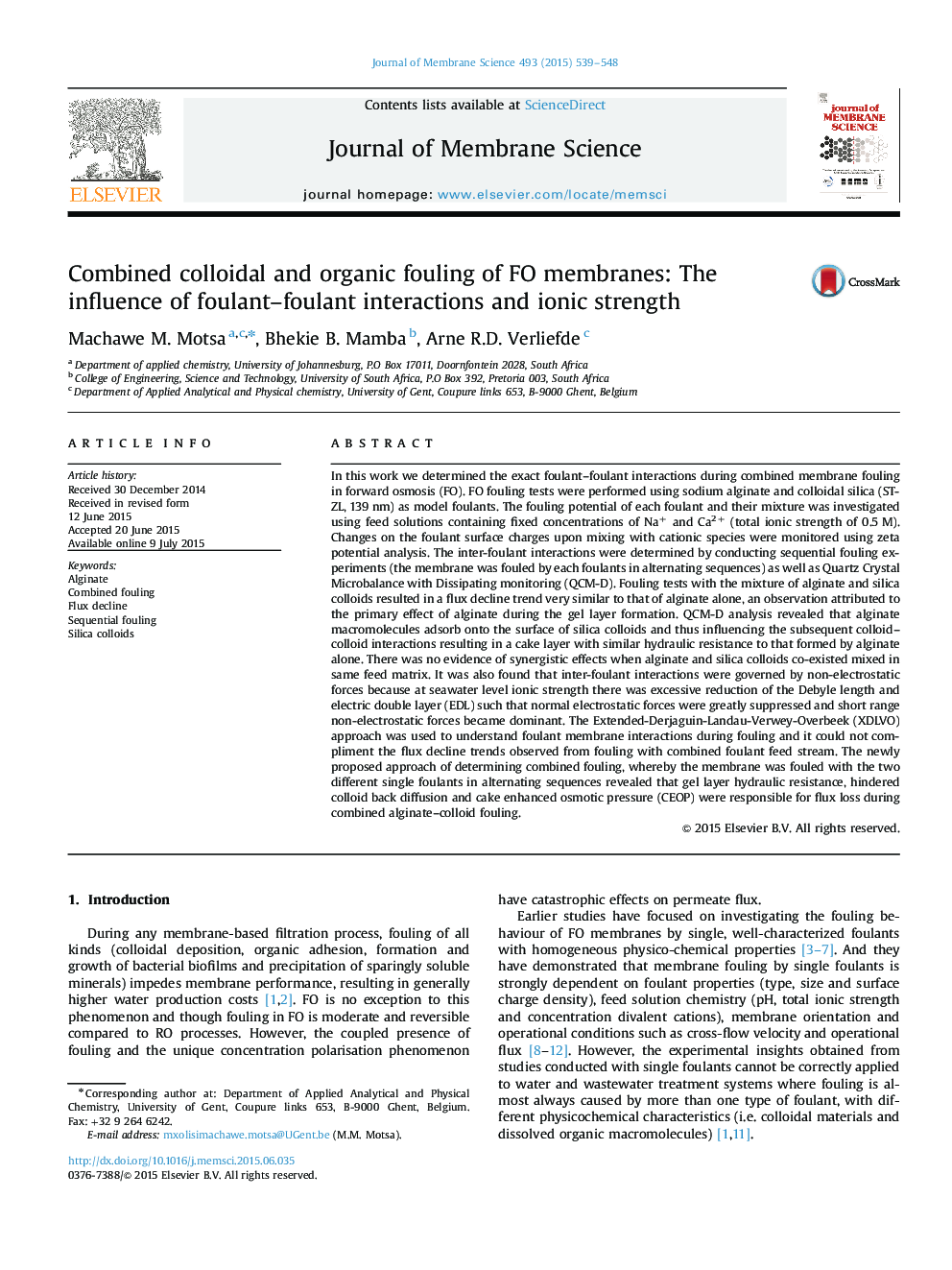| کد مقاله | کد نشریه | سال انتشار | مقاله انگلیسی | نسخه تمام متن |
|---|---|---|---|---|
| 7021158 | 1456006 | 2015 | 10 صفحه PDF | دانلود رایگان |
عنوان انگلیسی مقاله ISI
Combined colloidal and organic fouling of FO membranes: The influence of foulant-foulant interactions and ionic strength
دانلود مقاله + سفارش ترجمه
دانلود مقاله ISI انگلیسی
رایگان برای ایرانیان
کلمات کلیدی
موضوعات مرتبط
مهندسی و علوم پایه
مهندسی شیمی
تصفیه و جداسازی
پیش نمایش صفحه اول مقاله

چکیده انگلیسی
In this work we determined the exact foulant-foulant interactions during combined membrane fouling in forward osmosis (FO). FO fouling tests were performed using sodium alginate and colloidal silica (ST-ZL, 139Â nm) as model foulants. The fouling potential of each foulant and their mixture was investigated using feed solutions containing fixed concentrations of Na+ and Ca2+ (total ionic strength of 0.5Â M). Changes on the foulant surface charges upon mixing with cationic species were monitored using zeta potential analysis. The inter-foulant interactions were determined by conducting sequential fouling experiments (the membrane was fouled by each foulants in alternating sequences) as well as Quartz Crystal Microbalance with Dissipating monitoring (QCM-D). Fouling tests with the mixture of alginate and silica colloids resulted in a flux decline trend very similar to that of alginate alone, an observation attributed to the primary effect of alginate during the gel layer formation. QCM-D analysis revealed that alginate macromolecules adsorb onto the surface of silica colloids and thus influencing the subsequent colloid-colloid interactions resulting in a cake layer with similar hydraulic resistance to that formed by alginate alone. There was no evidence of synergistic effects when alginate and silica colloids co-existed mixed in same feed matrix. It was also found that inter-foulant interactions were governed by non-electrostatic forces because at seawater level ionic strength there was excessive reduction of the Debyle length and electric double layer (EDL) such that normal electrostatic forces were greatly suppressed and short range non-electrostatic forces became dominant. The Extended-Derjaguin-Landau-Verwey-Overbeek (XDLVO) approach was used to understand foulant membrane interactions during fouling and it could not compliment the flux decline trends observed from fouling with combined foulant feed stream. The newly proposed approach of determining combined fouling, whereby the membrane was fouled with the two different single foulants in alternating sequences revealed that gel layer hydraulic resistance, hindered colloid back diffusion and cake enhanced osmotic pressure (CEOP) were responsible for flux loss during combined alginate-colloid fouling.
ناشر
Database: Elsevier - ScienceDirect (ساینس دایرکت)
Journal: Journal of Membrane Science - Volume 493, 1 November 2015, Pages 539-548
Journal: Journal of Membrane Science - Volume 493, 1 November 2015, Pages 539-548
نویسندگان
Machawe M. Motsa, Bhekie B. Mamba, Arne R.D. Verliefde,